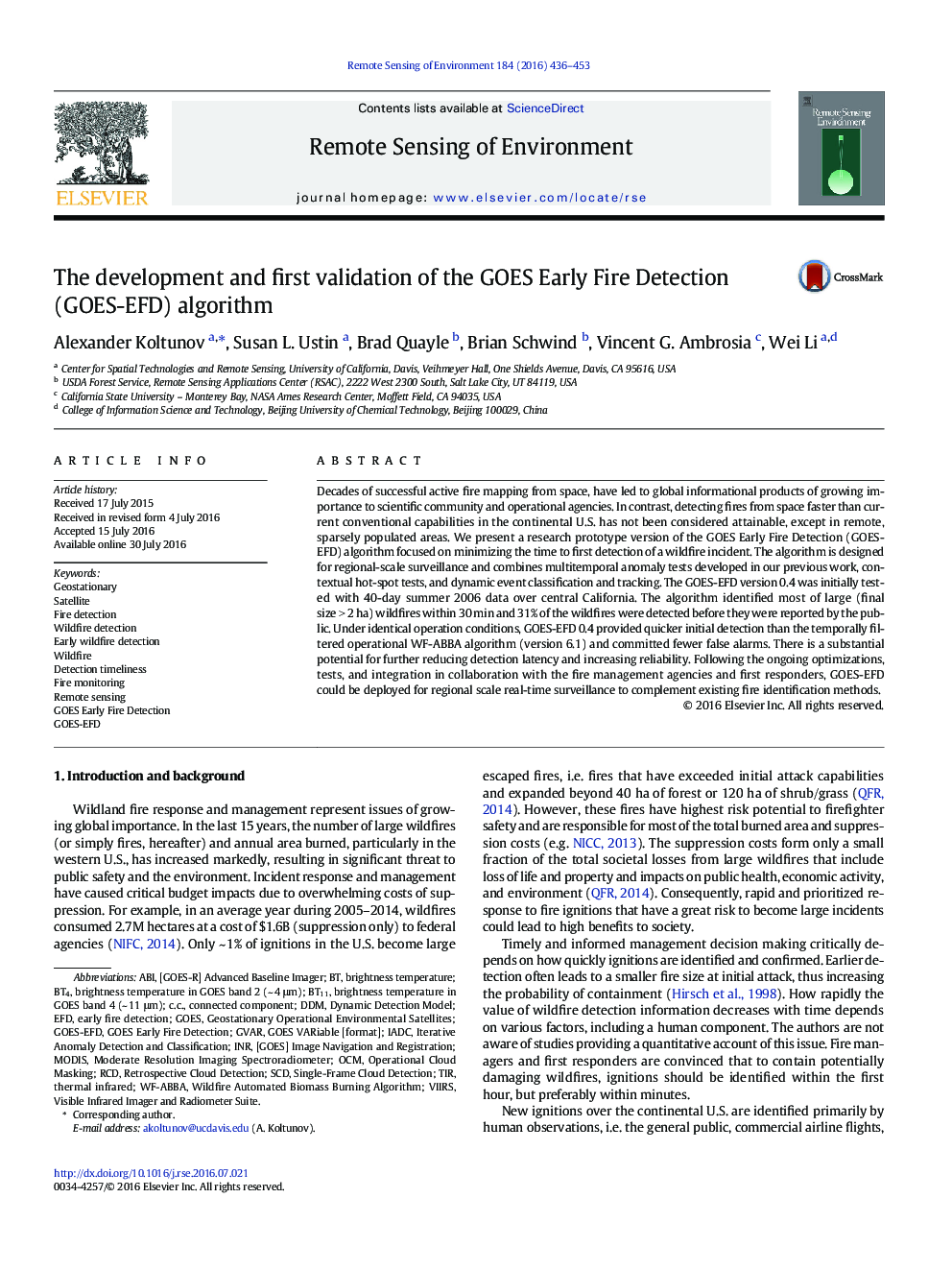| کد مقاله | کد نشریه | سال انتشار | مقاله انگلیسی | نسخه تمام متن |
|---|---|---|---|---|
| 6345250 | 1621216 | 2016 | 18 صفحه PDF | دانلود رایگان |

- New GOES algorithm focusing on ignition detection timeliness for early warning
- Predicts background temperatures with multitemporal and contextual models
- Event tracking module telling new incidents from previously reported ones
- Detects new ignitions earlier than WF-ABBA algorithm and with fewer false alarms
- Provided the earliest detection for some incidents
Decades of successful active fire mapping from space, have led to global informational products of growing importance to scientific community and operational agencies. In contrast, detecting fires from space faster than current conventional capabilities in the continental U.S. has not been considered attainable, except in remote, sparsely populated areas. We present a research prototype version of the GOES Early Fire Detection (GOES-EFD) algorithm focused on minimizing the time to first detection of a wildfire incident. The algorithm is designed for regional-scale surveillance and combines multitemporal anomaly tests developed in our previous work, contextual hot-spot tests, and dynamic event classification and tracking. The GOES-EFD version 0.4 was initially tested with 40-day summer 2006 data over central California. The algorithm identified most of large (final size > 2 ha) wildfires within 30 min and 31% of the wildfires were detected before they were reported by the public. Under identical operation conditions, GOES-EFD 0.4 provided quicker initial detection than the temporally filtered operational WF-ABBA algorithm (version 6.1) and committed fewer false alarms. There is a substantial potential for further reducing detection latency and increasing reliability. Following the ongoing optimizations, tests, and integration in collaboration with the fire management agencies and first responders, GOES-EFD could be deployed for regional scale real-time surveillance to complement existing fire identification methods.
Journal: Remote Sensing of Environment - Volume 184, October 2016, Pages 436-453